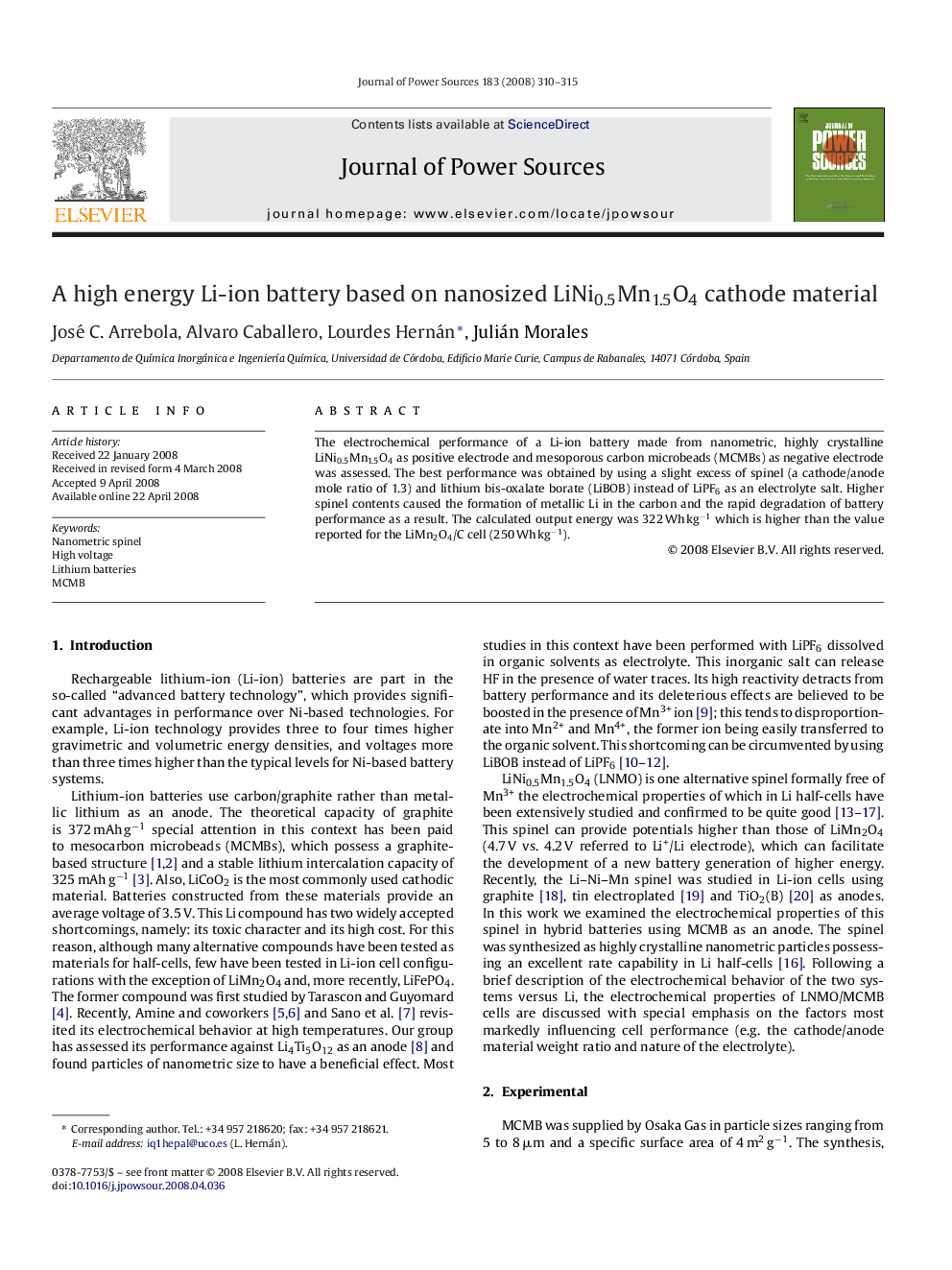| Article ID | Journal | Published Year | Pages | File Type |
|---|---|---|---|---|
| 1285412 | Journal of Power Sources | 2008 | 6 Pages |
Abstract
The electrochemical performance of a Li-ion battery made from nanometric, highly crystalline LiNi0.5Mn1.5O4 as positive electrode and mesoporous carbon microbeads (MCMBs) as negative electrode was assessed. The best performance was obtained by using a slight excess of spinel (a cathode/anode mole ratio of 1.3) and lithium bis-oxalate borate (LiBOB) instead of LiPF6 as an electrolyte salt. Higher spinel contents caused the formation of metallic Li in the carbon and the rapid degradation of battery performance as a result. The calculated output energy was 322 Wh kg−1 which is higher than the value reported for the LiMn2O4/C cell (250 Wh kg−1).
Keywords
Related Topics
Physical Sciences and Engineering
Chemistry
Electrochemistry
Authors
José C. Arrebola, Alvaro Caballero, Lourdes Hernán, Julián Morales,
